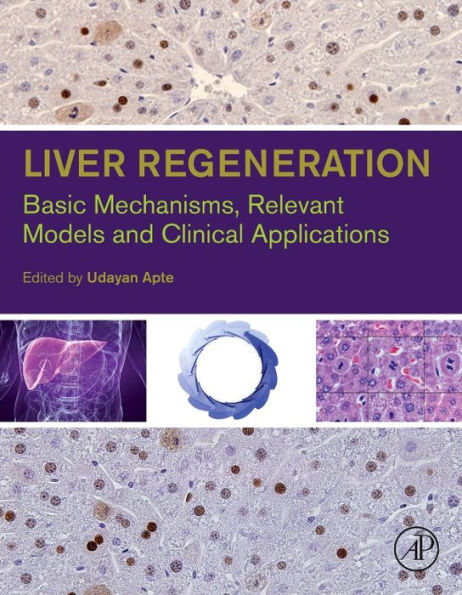Liver Regeneration: Basic Mechanisms, Relevant Models and Clinical Applications
Liver Regeneration: Basic Mechanisms, Relevant Models and Clinical Applications presents cutting-edge information on liver regeneration research through an integrated, systems-wide perspective. The book addresses discoveries on hepatic progenitor cells, liver regeneration after chemical damage, and liver regeneration as a prime therapy for liver failure and disease. By addressing the urgent need for translating basic research findings into clinically relevant modalities and potential therapeutic applications, the book provides the data needed to improve liver patient management. Hundreds of full-color, graphic photographs and illustrations underline key elements and show researchers and students important aspects of liver transplantation, immunofluorescence, and other techniques used in liver regeneration. - Summarizes current liver regeneration studies and discussions on expected discoveries - Provides an overview of standard scientific and cutting-edge technologies to study liver regeneration - Presents details on the molecular mechanisms that affect liver regeneration - Highly illustrated, with hundreds of full-color, graphic photographs and illustrations to enhance the learning process
1132570721
Liver Regeneration: Basic Mechanisms, Relevant Models and Clinical Applications
Liver Regeneration: Basic Mechanisms, Relevant Models and Clinical Applications presents cutting-edge information on liver regeneration research through an integrated, systems-wide perspective. The book addresses discoveries on hepatic progenitor cells, liver regeneration after chemical damage, and liver regeneration as a prime therapy for liver failure and disease. By addressing the urgent need for translating basic research findings into clinically relevant modalities and potential therapeutic applications, the book provides the data needed to improve liver patient management. Hundreds of full-color, graphic photographs and illustrations underline key elements and show researchers and students important aspects of liver transplantation, immunofluorescence, and other techniques used in liver regeneration. - Summarizes current liver regeneration studies and discussions on expected discoveries - Provides an overview of standard scientific and cutting-edge technologies to study liver regeneration - Presents details on the molecular mechanisms that affect liver regeneration - Highly illustrated, with hundreds of full-color, graphic photographs and illustrations to enhance the learning process
170.0
In Stock
5
1

Liver Regeneration: Basic Mechanisms, Relevant Models and Clinical Applications
326
Liver Regeneration: Basic Mechanisms, Relevant Models and Clinical Applications
326
170.0
In Stock

Product Details
| ISBN-13: | 9780128004319 |
|---|---|
| Publisher: | Elsevier Science & Technology Books |
| Publication date: | 08/13/2015 |
| Sold by: | Barnes & Noble |
| Format: | eBook |
| Pages: | 326 |
| File size: | 11 MB |
| Note: | This product may take a few minutes to download. |
About the Author
What People are Saying About This
From the B&N Reads Blog
